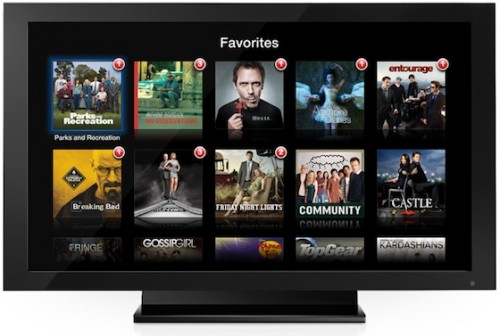OnDemand: Home TV Set Still King

New York – The traditional living room television set appears to still be holding its grip on the U.S. viewing public, but how pay TV customers utilize other screens like tablets, smartphones and laptop computers, is just as much a factor of where they are as who they are, according to a panel of industry pros at the Multichannel News On Demand Summit here Thursday.
“TV is still king,” said Vubiquity chief marketing officer Laure Lawrence at a panel discussion entitled “The Consumer Roundtable: Experiencing On Demand,” and moderated by Multichannel News technology editor Jeff Baumgartner. She added that according to Vubiquity research, about 85% of TV viewing is still done on the primary screen, the television set in the home. About 10% of that viewing is time-shifted and 7% to 9% of viewing is on devices like tablets and smartphones.
But BuddyTV CEO and founder Andy Liu said a lot of that depends on where the viewer is at the time. If they are at home, they tend to watch the family TV set, but he added that if the viewer is streaming content, they tend to do that on tablets or smartphones no matter where they are because the authentication process is easier on smaller devices than on the TV.
And viewers are using those devices differently. While in the past may networks and distributors scrambled to develop social media apps and technologies to let viewers interact with their TVs and their friends concerning individual shows, now thy are using their smartphones and tablets to check e-mail and look up information on the Internet.
“Social interaction allows them to continue their social life while they’re watching TV,” said Stingray Digital senior vice president of marketing and communication Mathieu Peloquin.
Liu agreed, adding that social media sites are changing how viewers are finding shows.
“What is an interesting trend now is social media is driving discovery,” Liu said, adding that in the past a viewer may have found out about a show through an advertisement on another ‘program or during big event shows like the Super Bowl. “Today, why we’re watching 90% of the time is because I was peer pressured into watching it.”
Multichannel Newsletter
The smarter way to stay on top of the multichannel video marketplace. Sign up below.
He pointed to the HBO hit “Game of Thrones,” adding that the show has gotten so much buzz and water cooler talk that it has practically shamed non-watchers into becoming viewers just to keep up with the conversation.
But while On Demand and TV Everywhere is helping viewers catch up on shows, it has to be easier to use. Peloquin said that his company is getting ready to roll out an authentication technology in Canada that will allow a pay TV customer to authenticate their service merely by placing their smartphone next to their TV speaker that would last for 90 days.
And sometimes easier means coming up with a more unique way of allowing users to navigate through all the content that is on demand. Liu said BuddyTV calls its content categories “Vibes” and doesn’t groups shows by traditional headings.
“Things like ‘comedy’ and ‘drama’ and ‘action’ don’t resonate as much as ‘Redneck Buddies’ or ‘Underwater Terror,’” Liu said, “[Viewers would] rather browse thru things that resonate with [them] based on [their] mood.
Lawrence said that viewers increasingly are demanding the ability to download shows and play them later on different devices, which could provide an edge for traditional multichannel video programming distributors against their over-the-top competitors.
“That’s a game-changer,” Lawrence said.
Even binging, or watching entire seasons of particular shows in one sitting is changing the panelists said.
Miner & Co. Studio president Robert Miner said that while binging was once a solo endeavor, it has become a “bonding ritual” for younger viewers.
Lawrence added that MVPDs are beginning to realize that On Demand and TV Everywhere viewers are high-value customers who are willing to pay for more convenience and better functionality.
“These are the customers you want,” Lawrence said. She added that will become increasingly important as the number of people who access on demand increases during the coming years.
While Lawrence does not believe linear TV will go away, she agreed with the other panelists that On Demand could make up about 30% of all TV viewing over the next three years, about triple its current level.
